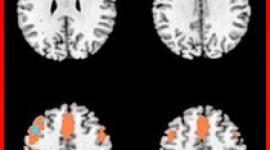CTIP - The Committee for Truth in Psychiatry II
 The Committee for Truth in Psychiatry, or CTIP, is a national organization of over 500 former electric shock patients. None of us was truthfully informed about the nature or consequences of this treatment before consenting to it, and we have pooled our experience-gained knowledge to provide truthful information about it for future psychiatric patients.
The Committee for Truth in Psychiatry, or CTIP, is a national organization of over 500 former electric shock patients. None of us was truthfully informed about the nature or consequences of this treatment before consenting to it, and we have pooled our experience-gained knowledge to provide truthful information about it for future psychiatric patients.
Over the years, many individual recipients of "electroconvulsive therapy" (ECT) (shock treatment) have related their personal experiences, verbally or in writing, emphasizing whatever aspects were most important in each one's special circumstances. What the CTIP has done as a group is to highlight and emphasize the common demoninators in the shock experience. Accordingly, though our members differ widely in the details of their own stories, including how they got into ECT and how much good or (more often) harm it did them, we can agree on the most certain effects of ECT and that future patients should be informed of them before they give their consent to it.
Following are the most important points we make:
-
If a person is in a state of physical suffering of nervous origin, ECT will almost certainly relieve it temporarily. ECT relaxes the nervous system and the relaxing effect lasts from a couple of days to a couple of months. Sometimes people stay well after the relaxing effect has worn off, but, typically, they quickly relapse.
-
Regardless of any beneficial effect, there is always a permanently deleterious effect on memory. This consists of erasure of a good deal of pre-shock memory and dimming of more, and it frequently includes also a permanent reduction in retentiveness for post-shock experience and learning.
-
These two effects in combination---the temporary feeling of well-being and the permanent harm to memory---imply that ECT "works" by damaging the brain. These are the classic symptoms of acute brain injury by any means---strokes, asphyxiation, concussion, carbon monoxide poisoning, etc. In all these events, the patient feels very well for a while but can't remember. If further evidence were needed of the principle at work in ECT's beneficial effect, it could be noted that the memory loss from ECT has always the distinctive pattern of brain damage forgetting (recent memories hardest hit) and that ECT is sometimes followed by other brain damage phenomena (examples common among our members are impairment of sense of direction and a touch of aphasia, or difficulty saying the words you meant to say).
As a vehicle for communicating these few salient points about ECT to future patients, we have incorporated them (along with other information) in a model ECT informed consent statement which we should like to see sponsored by the FDA or some governmental body. All CTIP members have endorsed the statement.
Origin, History, Format and Future
Our Committee was formed in l984, with 17 founding members, to participate in the Food and Drug Administration's regulatory proceedings concerning ECT.
FDA had classified the ECT device or shock machine in the highest risk class of medical devices, Class III, which classification earmarked ECT for a safety investigation; and the American Psychiatric Association (APA) had subsequently petitioned FDA to reclassify the device to Class II, which action would constitute recognizing ECT as a safe treatment without an investigation. The FDA was preparing to grant the APA's petition when the CTIP came in to oppose reclassification and to press for an investigation. We were confident that an impartial scientific investigation would confirm in physical terms what is apparent from ECT's emotional and memory effects: that it is inherently brain damaging.
Throughout the rest of the 1980s, the CTIP both enlarged its shock patient membership and also became the central contact for other individuals and organizations who urged an FDA investigation of shock treatment, including all fifty of the state Protection and Advocacy agencies.
Expansion of the CTIP was based on its informed consent statement. Any former shock patient who endorses it is a member. Membership imposes no duties or dues, but every endorsement stregthens the patient voice. And since we were bound together by agreement on the fundamental of the shock experience, we could operate without elected officers. Any member who chose to be active could speak, write, or deal with the FDA in the name of all.
With only such an informal kind of organization, we managed for six years to forestall action toward reclassification. Ultimately, however, the FDA bent to the stronger pressure from the psychiatrists and published in the Federal Register of September 5, 1990 a "proposal to reclassify" the ECT device to Class II. Since then, the classification (and investigation) have been "on hold", with no reclassification or investigation having yet taken place.
Regardless of when or in what direction the FDA may move, the CTIP is continuing to work for truthfully informed consent. The problem we alone address is that patients throughout the country are routinely misinformed and misled as to the results to be expected from shock treatment. At the same time, regulatory actions concerning ECT are under way in various state and local governments, instigated in some cases by ex-patients and in some cases by the electroshock industry. In any of these arenas, the opportunity exists for CTIP members to step forward and push for a requirement for truthful information, for they speak with the authority and credibility of a concerted voice of experience---a voice which grows stronger with the addition of each new member.
If you have had ECT, and if you would like to help protect future patients from consent by deception, we hope you will add the weight of your endorsement to our proposed ECT informed consent statement. Both electronic and snail-mail versions of the statement and membership form are available. If you have questions, please call or write the CTIP Director, Linda Andre, at PO Box 1214, New York, NY 10003, phone 212 NO-JOLTS.
Notice: Just to straighten out people who are confused: CTIP is NOT ect.org, and ect.org is not CTIP. They are two totally separate organizations. I am Juli Lawrence, and I run ect.org myself. There is no corporate sponsor and no men in black helicopters running things behind the scene (Dmitri is the black godwizard behind the curtain). Same deal with CTIP, except that it's run by Linda Andre and founded by the late Marylin Rice. I, Juli Lawrence, am a member of CTIP and offer this online information about it (plus the join form) as a service to electroshock survivors who wish to join. I consider Linda Andre a very dear friend of mine. I just wanted to clarify that this is not the official website of CTIP because a lot of people confuse this point.
next: Does Electroconvulsive Therapy Prevent Suicide?
~ all Shocked! ECT articles
~ depression library articles
~ all articles on depression
APA Reference
Staff, H.
(2000, December 29). CTIP - The Committee for Truth in Psychiatry II, HealthyPlace. Retrieved
on 2025, April 20 from https://www.healthyplace.com/depression/articles/ctip-the-committee-for-truth-in-psychiatry-ii



